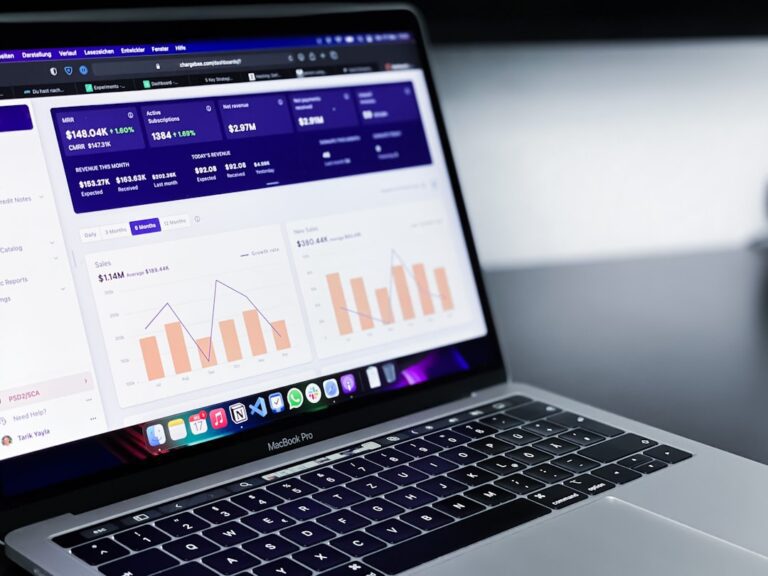The role of a virtual administrative assistant (VAA) has evolved significantly in recent years, driven by advancements in technology and the increasing demand for flexible work arrangements. A VAA is essentially a remote professional who provides administrative support to businesses, entrepreneurs, and executives from a distance. This role encompasses a wide range of tasks, including managing emails, scheduling appointments, handling customer inquiries, and even performing specialized functions such as bookkeeping or social media management.
The flexibility of a VAA allows organizations to tap into a global talent pool, enabling them to find the right skills and expertise without geographical constraints. Moreover, the responsibilities of a virtual administrative assistant can be tailored to meet the specific needs of the employer. For instance, a startup may require assistance with market research and data entry, while a busy executive might need help with calendar management and travel arrangements.
This adaptability makes VAAs an invaluable asset for businesses of all sizes. By outsourcing administrative tasks to a VAA, companies can focus on their core operations and strategic initiatives, ultimately driving growth and efficiency. The relationship between an employer and a VAA is built on trust and clear communication, which is essential for maximizing productivity and ensuring that tasks are completed effectively.
Key Takeaways
- A virtual administrative assistant can help with tasks such as scheduling, email management, and data entry, allowing you to focus on more strategic aspects of your business.
- Tasks that can be delegated to a virtual administrative assistant include calendar management, travel arrangements, and research tasks, among others.
- Clear communication and expectations are crucial when working with a virtual administrative assistant to ensure that tasks are completed accurately and on time.
- Time tracking and productivity tools can help both you and your virtual administrative assistant stay organized and efficient.
- Standard operating procedures and workflows can help streamline tasks and ensure consistency in the quality of work performed by a virtual administrative assistant.
Identifying Tasks to Delegate to a Virtual Administrative Assistant
Identifying Delegable Tasks
Common tasks that can be delegated include managing emails, organizing files, scheduling meetings, and conducting research. By offloading these responsibilities, business leaders can free up valuable time to focus on strategic decision-making and high-priority projects.
Specialized Functions and Expertise
In addition to routine administrative tasks, it is also beneficial to consider specialized functions that a VAA can handle. For example, if a business relies heavily on social media for marketing, delegating content creation and engagement monitoring to a VAA with expertise in digital marketing can yield significant benefits. Similarly, if financial management is a challenge, hiring a VAA with bookkeeping skills can streamline invoicing and expense tracking.
Strategic Delegation and Empowerment
This strategic delegation not only enhances operational efficiency but also empowers VAAs to contribute meaningfully to the organization. The key is to match tasks with the skill set of the virtual assistant, ensuring that they are equipped to handle the responsibilities effectively.
Setting Clear Expectations and Communication Guidelines

Establishing clear expectations and communication guidelines is fundamental to fostering a successful working relationship with a virtual administrative assistant. From the outset, it is essential to define the scope of work, including specific tasks, deadlines, and performance metrics. This clarity helps prevent misunderstandings and ensures that both parties are aligned on objectives.
For instance, if a VAA is responsible for managing social media accounts, it is important to outline the frequency of posts, the tone of voice to be used, and the types of content that should be prioritized. By providing detailed instructions, employers can set their VAAs up for success. Effective communication is another critical component of this relationship.
Given that VAAs work remotely, establishing regular check-ins can help maintain engagement and accountability. Utilizing various communication tools such as video conferencing platforms, instant messaging apps, or project management software can facilitate seamless interactions. It is also beneficial to create a shared document or dashboard where both parties can track progress on tasks and provide feedback.
This transparency fosters collaboration and allows for timely adjustments if challenges arise. By prioritizing clear expectations and open lines of communication, businesses can cultivate a productive partnership with their virtual administrative assistants.
Utilizing Time Tracking and Productivity Tools
| Tool | Features | Benefits |
|---|---|---|
| Time Tracking Software | Track time spent on tasks, generate reports, set reminders | Improved time management, better project estimation, increased productivity |
| Productivity Apps | Task management, goal setting, collaboration tools | Enhanced organization, streamlined communication, efficient task completion |
| Project Management Tools | Gantt charts, resource allocation, progress tracking | Clear project overview, optimized resource utilization, timely project delivery |
In an increasingly digital world, utilizing time tracking and productivity tools has become essential for maximizing the effectiveness of virtual administrative assistants. These tools not only help monitor the time spent on various tasks but also provide insights into productivity patterns. For instance, software like Toggl or Harvest allows both employers and VAAs to track hours worked on specific projects or tasks.
This data can be invaluable for assessing workload distribution and identifying areas where efficiency can be improved. Additionally, productivity tools such as Asana or Trello can streamline task management by providing a visual overview of ongoing projects. These platforms enable VAAs to prioritize their workload effectively while allowing employers to monitor progress in real-time.
By integrating these tools into daily operations, businesses can foster a culture of accountability and transparency. Furthermore, time tracking can help in evaluating the return on investment (ROI) associated with hiring a VAA, as it provides concrete data on how much time is saved by delegating tasks. This analytical approach not only enhances productivity but also supports informed decision-making regarding resource allocation.
Implementing Standard Operating Procedures and Workflows
Implementing standard operating procedures (SOPs) and workflows is vital for ensuring consistency and efficiency in the tasks handled by virtual administrative assistants. SOPs serve as documented guidelines that outline how specific tasks should be performed, providing clarity on processes and expectations. For example, if a VAA is responsible for onboarding new clients, an SOP detailing each step—from initial contact to contract signing—can streamline the process and minimize errors.
This documentation not only aids VAAs in executing their responsibilities but also serves as a training resource for future hires. Workflows complement SOPs by visually mapping out the sequence of tasks involved in completing a project or process. Tools like Lucidchart or Microsoft Visio can be used to create flowcharts that illustrate these workflows clearly.
By establishing well-defined workflows, businesses can enhance collaboration between team members and ensure that everyone understands their roles within the process. This structured approach reduces ambiguity and fosters efficiency by minimizing the likelihood of miscommunication or oversight. Ultimately, implementing SOPs and workflows empowers virtual administrative assistants to perform their duties with confidence while contributing to overall organizational effectiveness.
Leveraging Technology to Streamline Administrative Tasks

The integration of technology into administrative processes has revolutionized how businesses operate, particularly when working with virtual administrative assistants. Leveraging various software solutions can significantly streamline routine tasks, allowing VAAs to focus on higher-value activities. For instance, using cloud-based document management systems like Google Drive or Dropbox enables seamless file sharing and collaboration between employers and VAAs.
This accessibility ensures that both parties have real-time access to important documents without the hassle of email attachments or version control issues. Moreover, automation tools such as Zapier or IFTTT can help eliminate repetitive tasks by connecting different applications and automating workflows. For example, if a VAA receives inquiries through a contact form on a website, automation can be set up to automatically add those leads to a customer relationship management (CRM) system like HubSpot or Salesforce.
This not only saves time but also reduces the risk of human error in data entry. By embracing technology in this manner, businesses can enhance operational efficiency while empowering their virtual administrative assistants to deliver exceptional support.
Establishing Regular Check-ins and Performance Reviews
Establishing regular check-ins and performance reviews is essential for maintaining an effective working relationship with virtual administrative assistants. These interactions provide an opportunity for both parties to discuss progress on tasks, address any challenges encountered, and provide constructive feedback. Regular check-ins—whether weekly or bi-weekly—can help ensure that VAAs remain aligned with organizational goals while fostering open communication channels.
Performance reviews should be conducted periodically to assess the effectiveness of the VAA’s contributions over time. During these reviews, it is important to evaluate not only the completion of assigned tasks but also the quality of work delivered. Setting specific performance metrics—such as response times for emails or accuracy in data entry—can provide measurable benchmarks for evaluation.
Additionally, these reviews offer an opportunity for VAAs to voice any concerns or suggest improvements in processes that could enhance their productivity further. By prioritizing regular check-ins and performance evaluations, businesses can cultivate a culture of continuous improvement while ensuring that their virtual administrative assistants feel valued and supported.
Maximizing Efficiency and Cost Savings with Virtual Administrative Assistant Services
The utilization of virtual administrative assistant services presents numerous opportunities for maximizing efficiency and achieving cost savings within organizations. One of the most significant advantages is the reduction in overhead costs associated with hiring full-time employees. Businesses can engage VAAs on an as-needed basis, allowing them to scale their workforce according to fluctuating demands without incurring additional expenses related to office space or employee benefits.
Furthermore, by delegating administrative tasks to VAAs, organizations can enhance overall productivity levels among their core teams. Employees are often bogged down by routine administrative duties that detract from their ability to focus on strategic initiatives or client-facing activities. By outsourcing these responsibilities, businesses empower their teams to concentrate on high-impact work that drives growth and innovation.
In addition to cost savings and increased efficiency, engaging virtual administrative assistants allows organizations access to specialized skills that may not be available in-house. Whether it’s expertise in digital marketing, project management, or customer service, VAAs bring diverse skill sets that can enhance operational capabilities without necessitating extensive training or onboarding processes. In conclusion, embracing virtual administrative assistant services offers organizations an effective strategy for optimizing operations while achieving significant cost savings.
By understanding the role of VAAs, identifying tasks for delegation, setting clear expectations, leveraging technology, implementing SOPs, conducting regular check-ins, and maximizing efficiency through strategic outsourcing, businesses can thrive in today’s competitive landscape while reaping the benefits of enhanced productivity and reduced operational costs.





